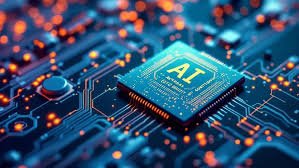Introduction to Power Grid Optimization
Power grid optimization is a crucial aspect of energy distribution and management, aimed at enhancing the efficiency and reliability of electricity supply systems. As energy demand increases, so does the need for an effective grid that minimizes energy loss and accommodates fluctuating consumer needs. Traditional methods of managing power grids often involve manual controls and reactive measures, which can lead to inefficiencies and high operational costs. These conventional approaches are increasingly challenged by multiple factors, including rising energy demand, energy loss during transmission, and the urgent necessity for adopting sustainable energy sources.
One of the primary challenges in power grid management is energy loss, often attributed to resistance in transmission lines and inefficient distribution practices. Additionally, fluctuating demand requires a dynamic response from grid operators to ensure that supply meets demand without compromising stability. The growing importance of integrating renewable energy sources, such as solar and wind power, further complicates this landscape, necessitating innovative strategies for grid management and optimization.
Technological advancements present significant opportunities to address these challenges. In recent years, the integration of automation, real-time data analytics, and advanced control systems has transformed traditional power grid operations. The advent of artificial intelligence (AI) stands out as a potential game-changer in this context. AI technologies can analyze vast amounts of data to forecast demand patterns, optimize load distribution, and enhance predictive maintenance of grid infrastructure. By harnessing AI for power grid optimization, utilities can improve operational efficiency, reduce costs, and contribute to a sustainable energy future. In this dynamic era of energy management, the strategic use of technology not only addresses existing challenges but also paves the way for the energy systems of tomorrow.
AI Technologies Transforming Power Grids
The integration of artificial intelligence (AI) technologies is fundamentally reshaping the optimization of power grids. One of the critical areas where AI has found a prominent application is in machine learning algorithms that analyze vast data sets to identify patterns and improve forecasting. These algorithms enable utilities to predict energy demand more accurately, allowing for efficient energy distribution. For instance, machine learning models can analyze historical consumption data and weather patterns to generate reliable forecasts, facilitating proactive energy management strategies.
Additionally, neural networks play a significant role in supporting predictive maintenance within power grids. By continuously monitoring the health of various components, neural networks can detect anomalies and predict potential failures before they occur. This capability significantly reduces downtime and enhances the reliability of power systems. For example, in real-world applications, companies have leveraged these neural networks to achieve significant cost savings and improve service delivery by minimizing unexpected outages through timely maintenance interventions.
AI-driven tools also contribute to effective demand response strategies. These tools analyze consumption behavior and dynamically adjust loads to match energy availability, thereby optimizing grid performance. By implementing such strategies, utilities can minimize peak demand, reduce operational costs, and enhance overall grid efficiency. Moreover, real-time monitoring systems that utilize AI algorithms ensure grid stability and resilience by providing instant alerts regarding irregularities in power flow or equipment performance, allowing for rapid responses to potential issues.
Several case studies illustrate the successful application of these technologies, showcasing how companies have significantly improved their efficiency and responsiveness in power management. For instance, certain power utilities have reported enhanced grid reliability and cost-efficiency by implementing comprehensive AI-driven systems, demonstrating the transformative power of AI in modernizing our energy infrastructure.
Benefits of AI in Power Grid Optimization
Artificial Intelligence (AI) has emerged as a transformative force in power grid optimization, offering numerous benefits that enhance overall performance. One of the primary advantages of integrating AI technologies into power grids is the significant improvement in operational efficiency. By utilizing machine learning algorithms, AI can analyze vast amounts of data in real-time, enabling utilities to predict demand fluctuations more accurately. This predictive capability minimizes energy waste and ensures that supply meets demand effectively, ultimately leading to a more efficient power grid.
Reliability is another critical area where AI technology excels. Forecasting tools powered by AI can identify potential outages and equipment failures before they occur. This proactive approach not only reduces downtime but also enhances the resilience of the power grid. Numerous studies have indicated that utilities employing AI-driven predictive maintenance strategies observe marked decreases in outage duration, leading to higher customer satisfaction and trust in the services provided.
Additionally, AI plays a vital role in promoting sustainability. By integrating renewable energy sources, such as wind and solar, into the grid, AI algorithms can optimize energy distribution, reducing reliance on fossil fuels. AI can quickly assess weather patterns and energy production levels, allowing for dynamic energy management that maximizes the use of green energy resources while maintaining grid stability. Furthermore, the economic benefits of AI in power grid optimization cannot be overlooked. Cost reductions stem from decreased operational expenses, fewer outages, and improved resource allocation, all of which contribute to a more financially sustainable energy sector.
Lastly, AI capabilities extend to enhancing customer engagement through the implementation of smart grids. By leveraging data analytics, utilities can offer personalized energy-saving recommendations to customers, empowering them to make more informed decisions regarding their energy consumption patterns. This increased level of customer interaction fosters a more engaged user base, ultimately aiding in the drive towards energy efficiency and sustainable practices.
Future Trends and Challenges
As we look to the future of AI in power grid optimization, several emerging trends are shaping the landscape. One significant trend is the increasing reliance on decentralized energy resources (DERs). With the rise of solar panels, wind turbines, and other renewable energy sources, power grids are evolving to accommodate these assets. AI technologies are playing a vital role in managing the integration of DERs, thus ensuring that energy supply remains both stable and efficient. Furthermore, as smart grids continue to advance, AI’s ability to analyze vast amounts of data in real-time will be crucial for optimizing energy distribution and consumption, allowing for more responsive and flexible energy systems.
However, alongside these advancements, the industry faces notable challenges. Cybersecurity has emerged as a critical concern, particularly as AI systems become increasingly interconnected. The integration of advanced algorithms into the power grid necessitates robust security measures to protect against potential threats, such as data breaches and cyberattacks. The reliance on AI for optimizing energy management introduces vulnerabilities that necessitate ongoing vigilance and investment in secure infrastructure.
In addition to cybersecurity, regulatory hurdles represent another significant challenge. Policymakers must navigate the intricacies of emerging AI technologies while fostering environments conducive to innovation. This will require a balanced approach that not only encourages the adoption of AI but also ensures compliance with existing regulations. The demand for skilled professionals to navigate these complex systems cannot be overlooked either; as the integration of AI expands, there will be a pressing need for expertise in both AI development and energy management.
Finally, the ethical considerations surrounding AI deployment in the energy sector warrant attention. Questions regarding data privacy, fairness, and potential job displacement arise as AI systems gain prominence. Addressing these ethical challenges will be essential to ensure a responsible path forward in the quest for optimized power grid efficiency.









